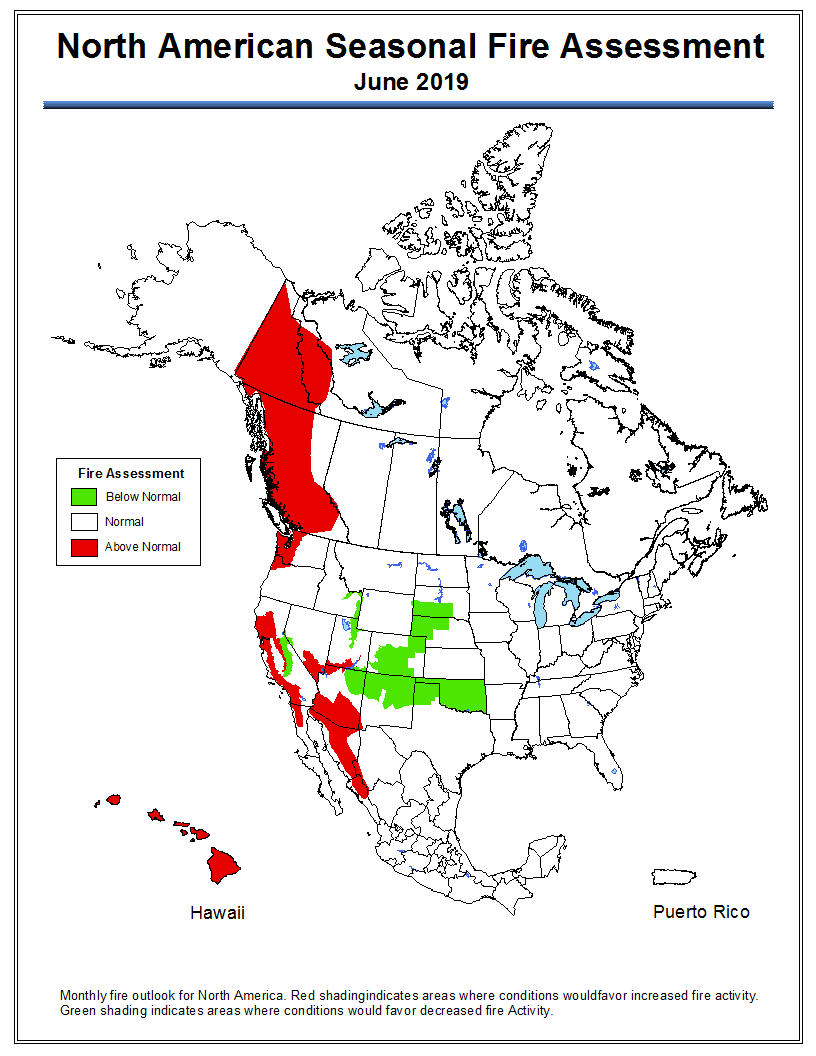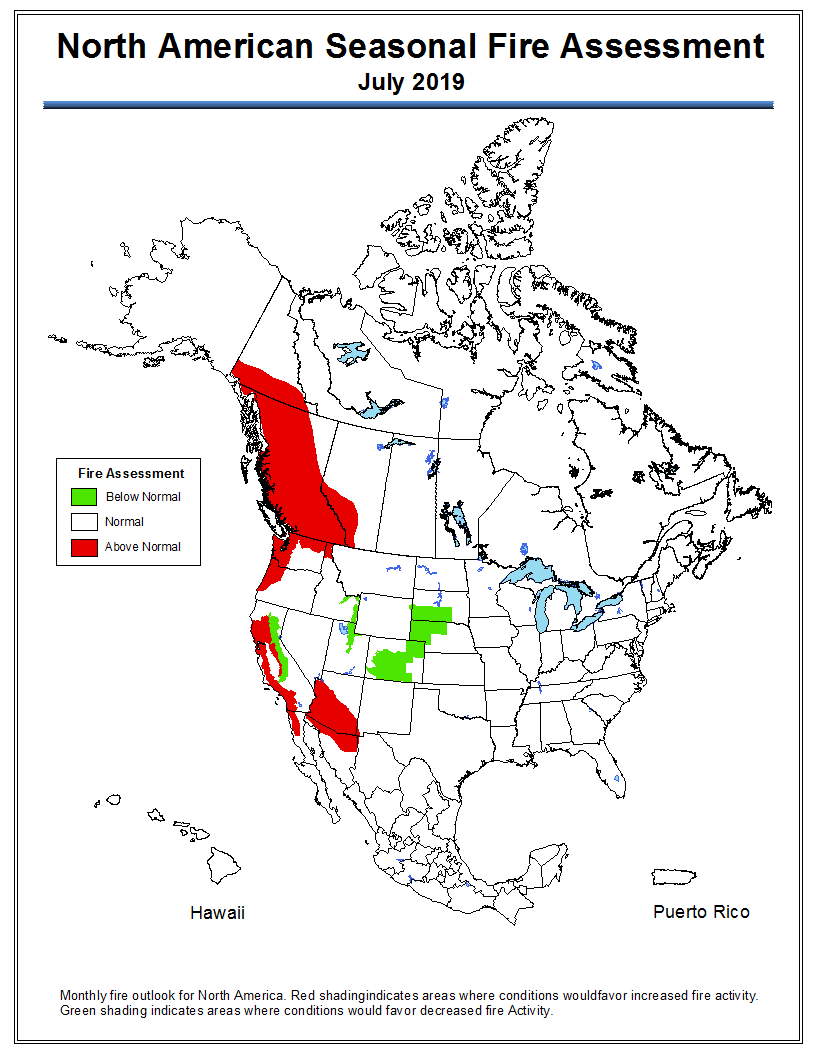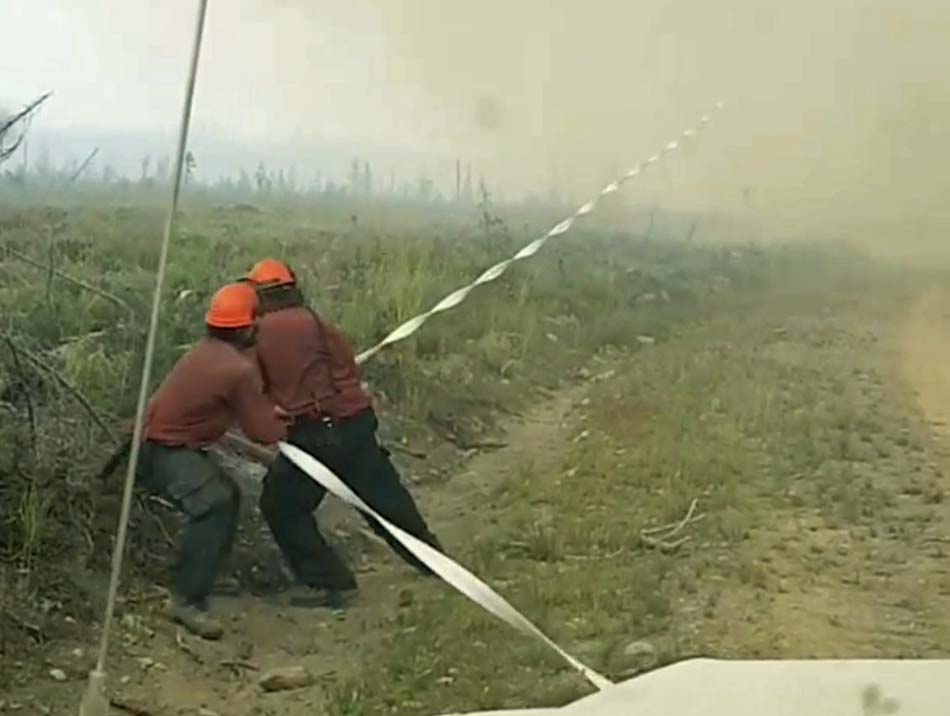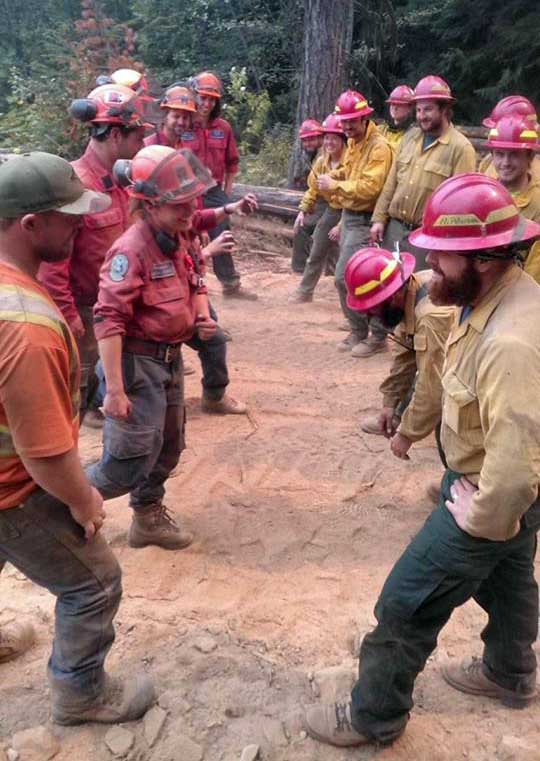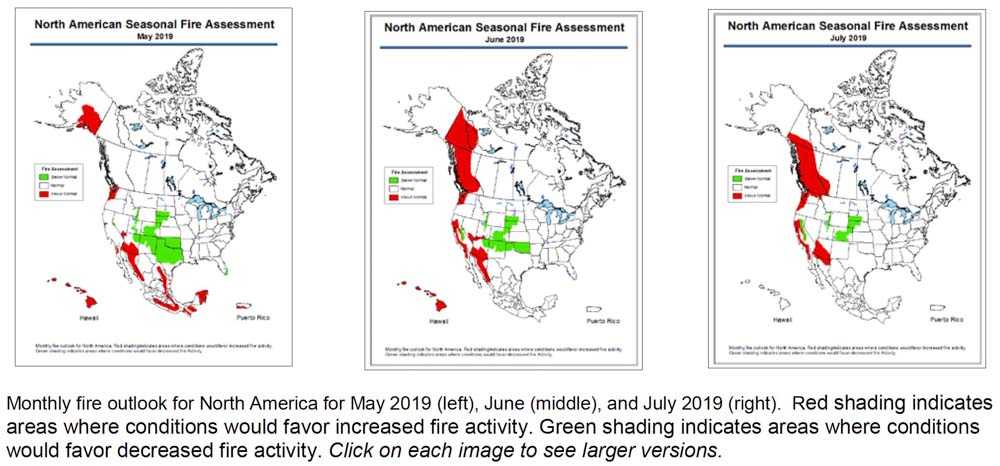
The Predictive Services section at the National Interagency Fire Center has predicted above normal wildfire activity this summer for southern Arizona, areas of California, and western Oregon and Washington.
An outlook for North America released on Friday also shows enhanced potential for British Columbia and the Yukon Territory in June and July.
Below is an excerpt from the North American Seasonal Fire Assessment and Outlook prepared by NIFC, Natural Resources Canada, and Servicio Meteorológico Nacional.
“For May, recent climate model runs suggest Canada will have lower fire severity than normal. While an early start to warm and dry conditions is leaving much of British Columbia prone to fire starts, rainfall is likely in the last half of the month, which will likely result in normal monthly fire severity for the province. The latest climate model runs hint at continued blocking ridges in the eastern Pacific during June, resulting in warm and dry conditions and resulting elevated fire severity indexes in British Columbia and Yukon. This pattern often features the eastern side of the ridge over the Prairies, so western Alberta also appears prone to elevated fire risk, while conditions east of Alberta are likely to have normal values. July’s forecast is similar to June’s forecast, with elevated fire severity indexes expected throughout British Columbia, western Alberta, and southern Yukon. A slight difference exists as the Yukon area depicted covers only the southern part of the territory in July, while in June it extended north near the Arctic coast.”

